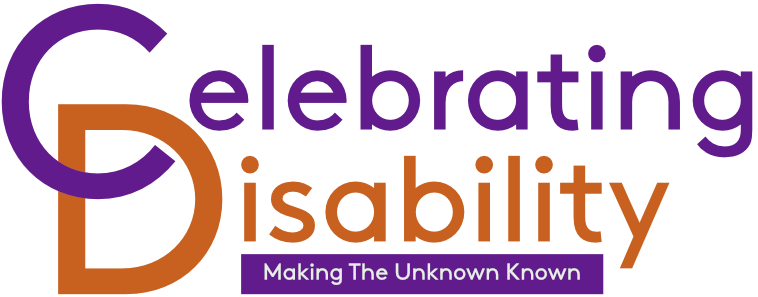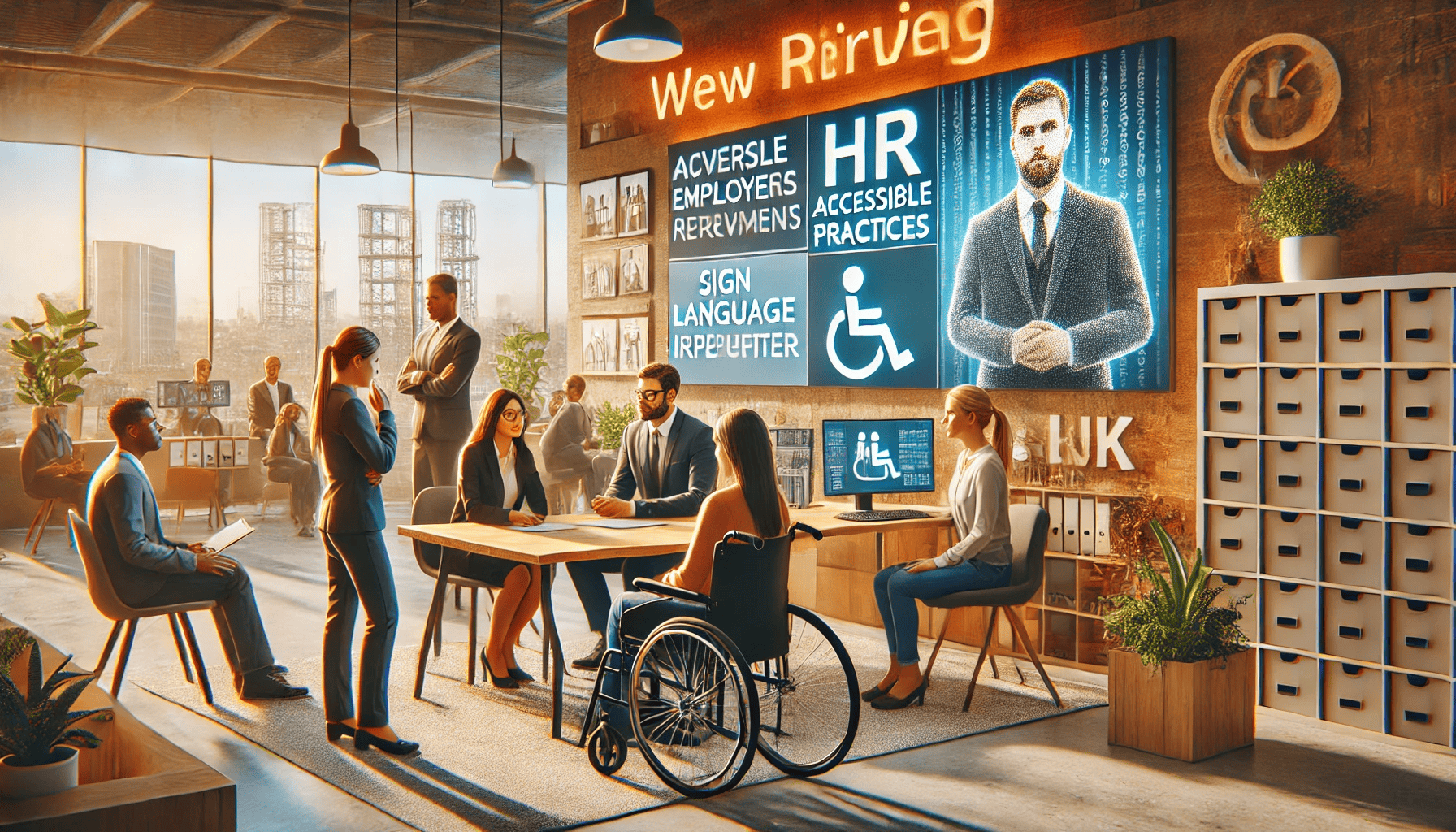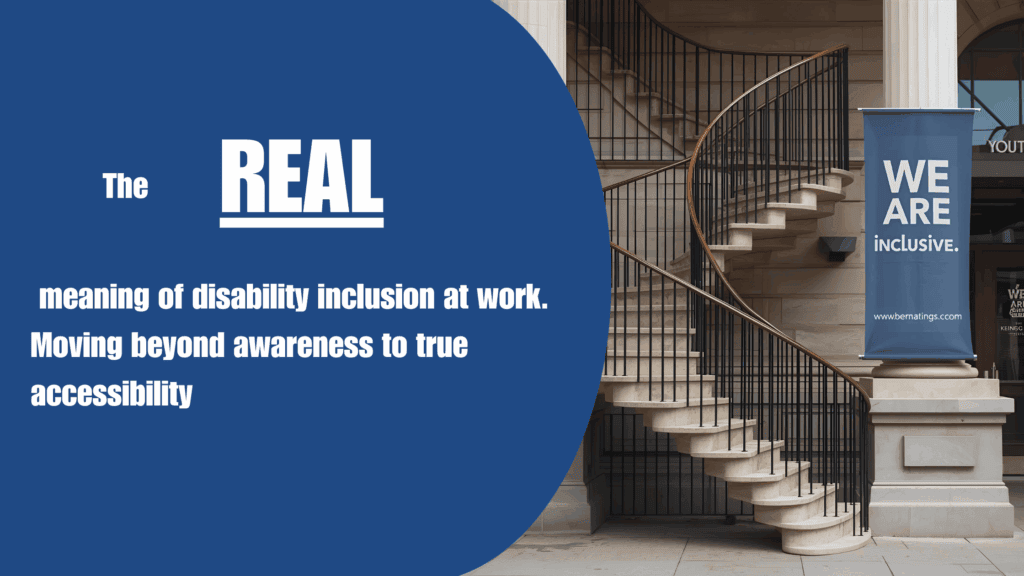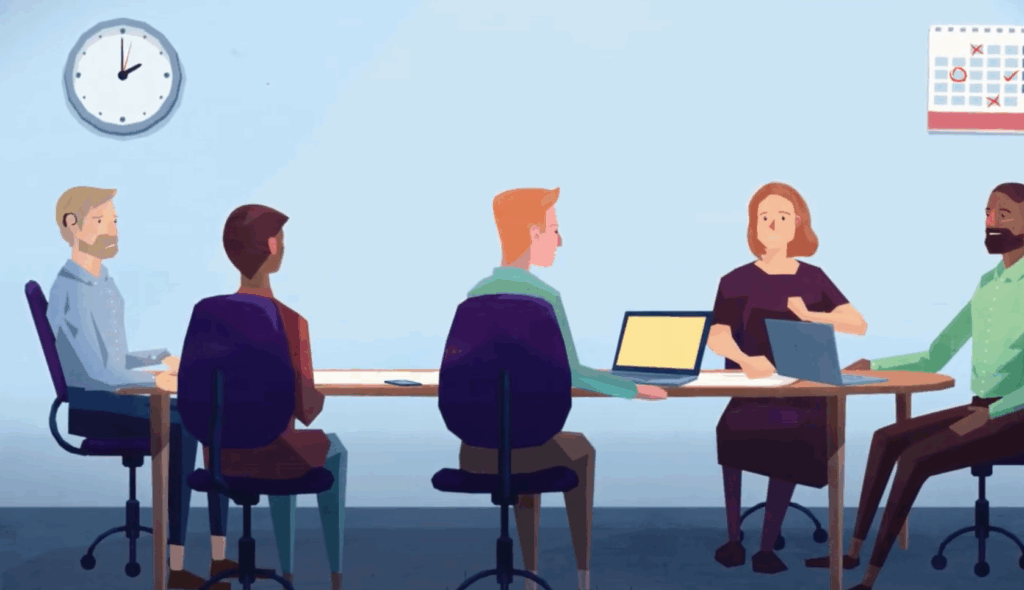Developing a disability inclusive recruitment process is a vital step in fostering a diverse and inclusive workplace. However, many organisations unintentionally create barriers during the recruitment process that deter talented individuals from applying or succeeding. This blog explores common barriers disabled candidates face in the UK, offers practical solutions, and provides insights into the legislation that underpins inclusive hiring practices.
Why Focus on Disability-Inclusive Recruitment?
Disabled people make up 24% of the UK’s working-age population, yet they remain significantly underrepresented in the workplace. The disability employment gap persists, often due to misconceptions about what it means to hire and work with disabled individuals. By actively addressing these barriers, organisations can tap into a pool of skilled, talented, and dedicated candidates while demonstrating a commitment to equality and diversity.
The Legal Framework
Under the Equality Act 2010, employers in the UK are required to ensure that disabled candidates are not disadvantaged during recruitment. This includes making reasonable adjustments to ensure the process is accessible. The law also protects disabled individuals from discrimination, whether direct, indirect, or arising from a failure to make adjustments.
While legal compliance is essential, creating an inclusive recruitment process goes beyond ticking boxes. It’s about designing processes and environments where everyone can perform at their best.
Common Barriers in Recruitment
Inaccessible Job Descriptions
Barrier: Overly complicated or jargon-heavy job descriptions can deter candidates with certain disabilities, such as dyslexia, ADHD, or visual impairments.
Solution: Use clear, concise, and straightforward language. Include only essential criteria and avoid unnecessarily restrictive requirements like “must have a driving licence” unless absolutely necessary.
Application Processes
Barrier: Online application systems are often not designed with accessibility in mind. Candidates using screen readers or those who struggle with large amounts of text can find these systems overwhelming.
Solution: Ensure your online platforms meet accessibility standards, such as WCAG 2.1. Provide alternative ways to apply, such as submitting a video or completing a simplified application form. Clearly communicate that adjustments are available upon request.
Interview Formats
Barrier: Traditional interview methods, such as panel interviews or rapid-fire questioning, can disadvantage candidates with anxiety, autism, or hearing impairments.
Solution: Offer flexibility in interview formats. Allow candidates to request adjustments, such as a one-to-one interview, additional time to respond to questions, or the presence of a support person. Provide questions in advance where possible, enabling candidates to prepare thoroughly.
Unconscious Bias
Barrier: Unconscious biases can lead hiring managers to favour candidates who resemble their own backgrounds and experiences, often excluding disabled applicants.
Solution: Provide disability inclusion training to all recruitment staff and management. Bias comes from a range of influences. Often with disability, it is a lack of awareness of the barriers that disabled people face that force people to believe it is a disengagement or unwillingness to try. Encourage hiring managers to be flexible in their approach to delivering interviews to enable them to focus on skills rather than qualifications only and assumptions about a candidate’s ability.
Practical Steps for Disability Inclusive Recruitment
Step 1: Audit Your Recruitment Process
Start by reviewing your existing recruitment practices. Are your job adverts inclusive? Are your platforms accessible? Invite feedback from disabled candidates or consult with Celebrating Disability to identify gaps. We provide an inclusion audit service. To read more about the service, please click here.
Step 2: Advertise Inclusively
Use inclusive language in job postings and make it clear that your organisation welcomes disabled applicants. Include a statement encouraging applicants to request reasonable adjustments and provide contact details for queries.
Example: “We are committed to creating an inclusive workplace and welcome applications from disabled candidates. If you require any adjustments during the recruitment process, please let us know.”
Step 3: Simplify the Application Process
Avoid overly long forms or unnecessary steps. Test your online systems to ensure they work with assistive technologies. Offer guidance or alternative formats for completing applications.
Step 4: Train Your Team
Equip hiring managers and HR professionals with disability awareness training. Understanding how different impairments could impact a candidate’s experience helps create a fairer and more supportive process.
Step 5: Make Adjustments Easy
Simplify the process for requesting adjustments, both during recruitment and employment. Responding positively and promptly to a request for a British Sign Language (BSL) interpreter is an example of this.
Step 6: Evaluate Skills Fairly
Focus on the skills and potential of candidates rather than rigid job requirements. Consider how tasks might be adapted to suit the strengths of a disabled employee.
Overcoming Workplace Barriers
Once a disabled candidate is hired, it’s essential to continue building an inclusive environment. Recruitment is only the first step; ongoing support is equally important.
Accessibility in the Workplace
Ensure the workplace is physically and digitally accessible. Examples include providing adjustable desks, ensuring software compatibility with screen readers, and creating quiet spaces for those who need them.
Clear Communication
Foster open communication so employees feel comfortable discussing their needs. Line managers should receive training on how to handle these conversations sensitively.
Reasonable Adjustments
The process of implementing reasonable adjustments should be straightforward. Employees shouldn’t have to navigate excessive bureaucracy to access the tools or support they need to succeed.
The Business Case for Inclusive Recruitment
Employing disabled people isn’t just the right thing to do—it’s also good for business. Diverse teams bring fresh perspectives, creativity, and innovation. Research has shown that inclusive organisations are more likely to outperform their competitors in terms of productivity and profitability.
Moreover, hiring disabled employees can enhance your organisation’s reputation as a socially responsible employer. This not only attracts top talent but also resonates with clients and customers who value equality and diversity.
Moving Forward
Recruiting disabled employees requires thought, effort, and a willingness to adapt. While the journey may seem daunting, the rewards far outweigh the challenges. By removing barriers and embracing inclusive practices, you create a workplace where everyone has the opportunity to thrive.
At Celebrating Disability, we specialise in providing training and support to help organisations build inclusive recruitment processes. If you’d like to learn more about how we can assist, get in touch today. Together, we can make your workplace a beacon of inclusivity.




